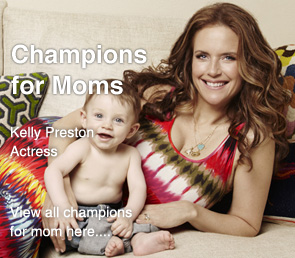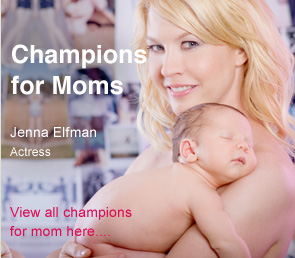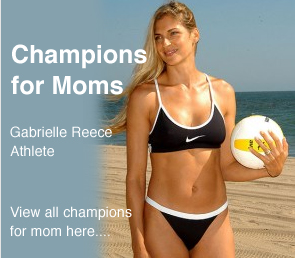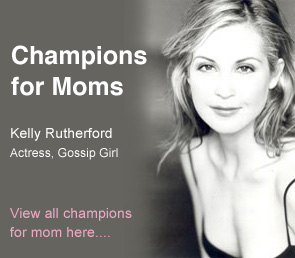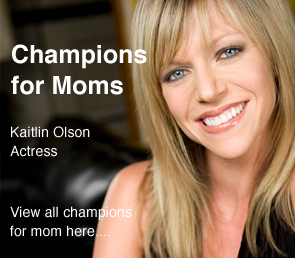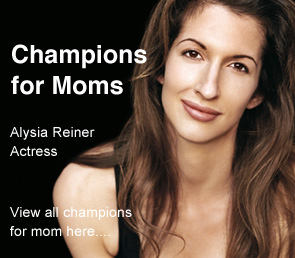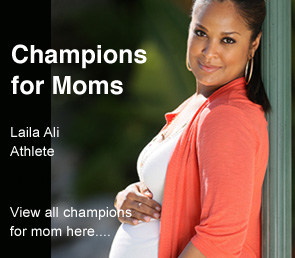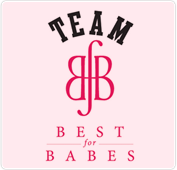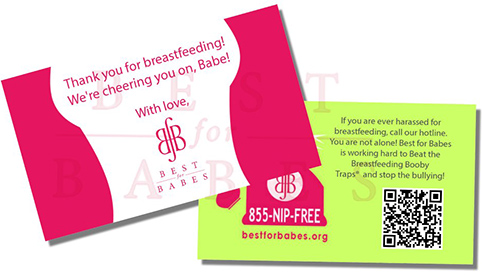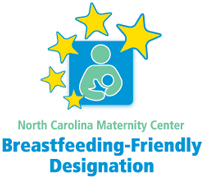 This is the 45th in a series of posts on Booby Traps,™ made possible by the generous support of Motherlove Herbal Company.
This is the 45th in a series of posts on Booby Traps,™ made possible by the generous support of Motherlove Herbal Company.
We’re often told to be good consumers when it comes to breastfeeding care. Get informed. Read a book. Choose your providers carefully.
But what are the limits to how informed you can be?
Say you are the model pregnant mom when it comes to informed decision making. You learn about the Booby Traps, you read a good breastfeeding book, you go to a breastfeeding support group. You go so far as to commit the Ten Steps to Successful Breastfeeding to memory.
Then say you have three different hospital birthing options. You know that hospital practices can support or undermine your breastfeeding experience. How are you going to put all this knowledge to use choosing where to birth for good breastfeeding care?
Are you really going to go to each hospital and spend the hours it takes to discern which of the Ten Steps is in place at each of these three hospitals?
Bless those of you who have done it. And I don’t blame those of you who haven’t one bit. Who has the time and resources to get the information and evaluate its accuracy? And is this the best we can do - every mother has to go to multiple hospitals armed with a long list of questions? No mother - and no hospital - could really want that. Nurse managers have better things to do with their time than to explain their pacifier policy to 750 different moms each year.
What makes sense is to have a simple way for moms to learn exactly what goes on at each hospital. No rooming-in? Supplements routinely given for no medical reason? Formula bags given at discharge? This should be a matter of easily accessible, public information. But it isn’t.
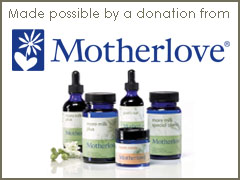 But that’s not because the information isn’t being collected. It is. In several ways, in some cases using your state and federal tax dollars. It’s just not readily available or useful to you.
But that’s not because the information isn’t being collected. It is. In several ways, in some cases using your state and federal tax dollars. It’s just not readily available or useful to you.
You can probably tell that I find this very frustrating at the individual level. But I think that there’s another, far more troubling problem this raises.
Hospitals are extremely sensitive to consumer demand, and mothers vote with their feet. If you didn’t know it already I’m here to tell you: In many communities there’s a fierce competition for your birth.
So the lack of data is a huge missed opportunity to change hospital practices. If mothers knew that Hospital A followed 8 of the Ten Steps to Successful Breastfeeding and Hospital B followed a lowly 2, they could use that information to make their birthing choices. And how long do you think it would take for Hospital B to shape up?
Here’s a rundown of the data collected about breastfeeding care practices and outcomes. And if you hang in there with me I want to point to one state that has recently taken the initiative to provide good data to mothers and create a lever for change.
Baby Friendly Hospitals. Baby Friendly hospitals have gone through a lengthy process which certifies that they follow the Ten Steps to Successful Breastfeeding, and it’s all verified by outside folks. Baby Friendly represents one big sigh of relief for mothers, who can feel confident that their providers will be following evidence-based practices. Birthing at a Baby Friendly hospital? No need to make that Magic Marker “no pacifiers” crib card or fight the hospital to be able to keep your baby in the room with you, among other worries.
But while Baby Friendly is on the rise thanks to the Surgeon General and the CDC, less than 5% of births currently occur in Baby Friendly hospitals. In many regions, even states, asking if a hospital is Baby Friendly will just get you a quizzical look or perhaps a snort. So using Baby Friendly data just isn’t an option for most moms - yet.
An employee of a hospital in my area recently told me that in the last month she’s had two moms ask if their hospital is Baby Friendly. While I found this encouraging it also made my heart ache a little for those informed and earnest moms. The nearest Baby Friendly hospital to them is nearly 100 miles away.
mPINC (Maternity Practices in Infant Nutrition and Care). Did you know that each birthing hospital in the country gets a grade for breastfeeding care? They do. Every two years the CDC collects information from each hospital about their compliance with the Ten Steps to Successful Breastfeeding. They then issue hospitals scores for different areas and an overall score which ranges from 0 to 100 (the average score in 2009 was 65). mPINC tracks progress over time, and a hospital’s score can rise or fall based on changes in their practices.
Let me be clear: This information is incredibly valuable in identifying problems in the aggregate, setting policy, and helping hospitals identify areas needing improvement. I’m very grateful that this data exists.
But chances are you have no idea if your hospital got an A+ or an F on the mPINC because this data doesn’t have to be made public. In order to ensure that hospitals would tell the truth about the care they provide, the CDC does not require hospitals to release this information to the birthing public.
Any mother could request their local hospitals’ mPINC scores, but I’ll bet you a nickel (my maximum) that it would be a challenge to near impossible to extract it. If any of you have had experience doing this I’d love to hear how it went.
State data. Most (but not all) states collect information on breastfeeding through birth certificates, but it’s generally limited to breastfeeding initiation. And there are two problems with that information: 1) It’s often difficult to find, even when it’s on state websites, and 2) the measures of initiation and exclusivity are so influenced by maternal demographics that it’s very hard to draw many conclusions from them. Here’s what I mean: a hospital that serves mothers who are educated, higher income, and older is going to have a high breastfeeding rate whether mothers get good help or not, because these factors are so closely associated with breastfeeding intention and initiation. Does that mean you should birth there? It’s not clear.
What’s the solution? One state has taken a novel approach to making information about breastfeeding care available to moms. North Carolina has a Breastfeeding Friendly Designation program which gives each hospital a grade on a star system, based on their report of how many of the Ten Steps they follow. Check out the image at the top of this post and you’ll see five yellow stars. Each star represents two of the Ten Steps, and moms can easily see, based on the number of stars colored in, how close a hospital is to evidence-based practices. It doesn’t require site visits, but some documentation is required. And I find it interesting that the message is that all hospital are being graded on a continuum which points them toward becoming Baby Friendly. This is a voluntary program and so far a minority of the hospitals are participating, but it’s a new program and peer pressure is a powerful thing. (Live in North Carolina and want to check out the ratings? Here you go.)
If knowledge is power, we have a long way to go in taking making moms powerful in choosing their own care - and improving it for others.
Did you know much about your hospital’s breastfeeding care practices when choosing it? Have you heard of mPINC, and were you able to use it to make your birthing choices? Do you think moms should have more information when making these choices?



